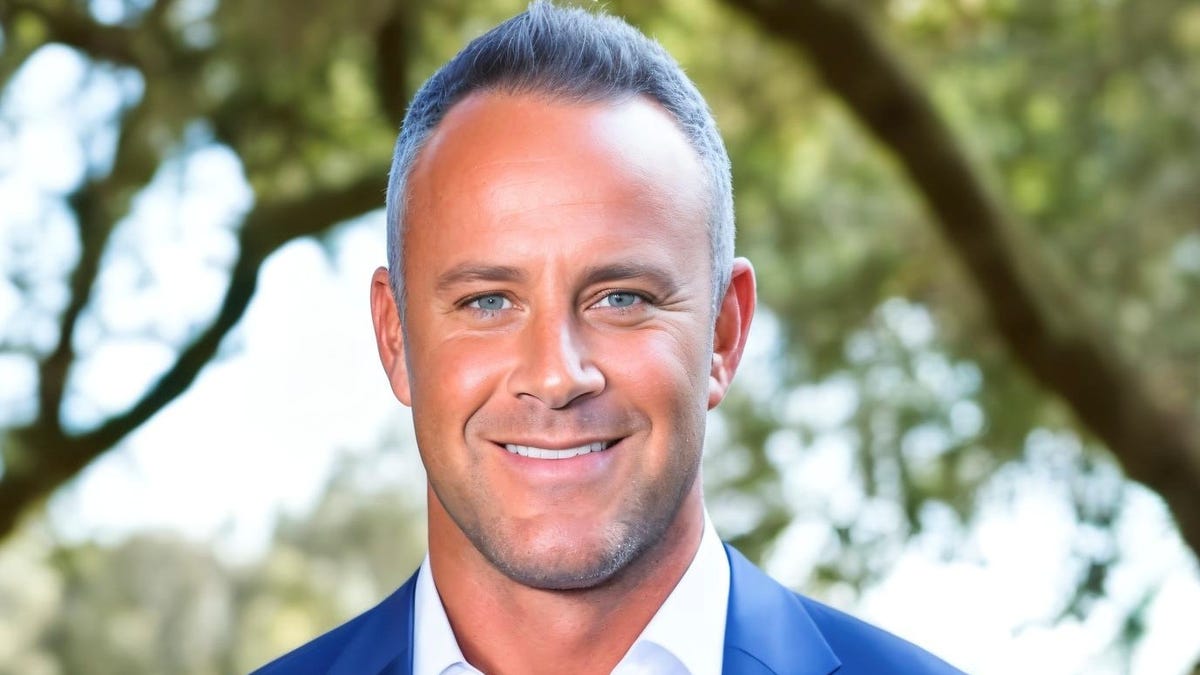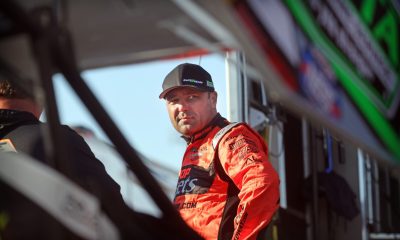USSSA names Latella as new chief executive officer
The Viera-based United States Specialty Sports Association has named John J. Latella as chief executive officer.
USSSA is the No. 1 multisport association in the nation.
Latella brings a blend of entrepreneurial drive, operational excellence and purpose-driven leadership to the organization, as it looks to expand its reach and impact in youth sports nationwide.
Latella, a seasoned business leader and youth sports advocate, was selected from a national search, and is poised to lead the association into a new era of growth and impact.
He is an accomplished executive with more than 25 years of leadership experience.
Latella, the former CEO and co-owner of Garden Fresh Gourmet, led the company through a period of significant growth, culminating in its sale to Campbell Soup Co. in 2015.
He also is a longtime nonprofit leader, having served on the Salvation Army’s National Advisory Board, and chaired major philanthropic initiatives that have raised millions of dollars for community development.
“What initially drew me to USSSA was its unique ability to impact lives through sports at every level, from grass-roots to elite-competitive,” Latella said. “This organization doesn’t just organize games. It builds communities, creates lifelong memories, and opens doors for athletes of all ages and backgrounds.”
As CEO, Latella will prioritize building trust across the USSSA community, enhancing the athlete and family experience, modernizing operations through technology, and strengthening national brand recognition. His leadership will focus on expanding access to youth sports, forging strategic partnerships, and creating aspirational pathways for athletes at all levels.
“In the short term, success is about listening, learning and quickly creating wins that benefit our athletes, coaches, directors and families,” Latella said. “In the long term, it’s about ensuring USSSA grows in a sustainable, mission-driven way — leading with integrity and measurable impact.”
Latella’s appointment marks the next chapter for USSSA, which currently sanctions more than 35,000 events and serves 4.5 million participants across 47 states. He plans to elevate the organization’s national presence by amplifying its digital footprint, prioritizing inclusion and access, and strengthening community engagement efforts.
“Our best days are ahead of us,” Latella said. “We will honor the rich legacy of USSSA, while boldly shaping its future, building a vibrant culture that creates opportunity, strengthens communities, and ensures every athlete has a place to grow, both on and off the field.”
Latella earned a law degree from Michigan State University, a master’s in finance from Walsh College, and a bachelor’s degree in criminology/pre-law from Wayne State University. He also completed the Key Executive Program at Harvard Business School.
In 2024, he was inducted into the Entrepreneurship and Innovation Hall of Fame at Wayne State University’s Mike Ilitch School of Business.
The company serves as the largest sanctioning body for sports including but not limited to slow-pitch softball, baseball, fast-pitch softball, basketball, soccer and more.
For more information, go to USSSA.com.
Most Brevard hospitals get high ratings for safety from Leapfrog Group
Most Brevard County hospitals received high marks from The Leapfrog Group, a national nonprofit organization that twice a year looks at the safety of health care facilities in the United States.
Leapfrog assigns a letter grade (A-F) to general hospitals across the country, based on over 30 national performance measures reflecting errors, accidents, injuries and infections, as well as the systems hospitals have in place to prevent harm.
The Leapfrog Hospital Safety Grade is the only hospital ratings program based exclusively on hospital prevention of medical errors and harms to patients. The grading system is peer-reviewed, fully transparent and free to the public. Grades are updated twice annually, in the spring and fall.
The Leapfrog Hospital Safety Grade ratings for spring 2025 gave all four Health First hospitals high marks That includes an A for Holmes Regional Medical Center in Melbourne; and 3 B’s for Cape Canaveral Hospital in Cocoa Beach, Palm Bay Hospital and Viera Hospital.
In reacting to the ratings, Health First President and CEO Terry Forde said: “This is such a tremendous honor that reflects so highly on each and every one of our Health First associates who care for our valued patients — even before they step foot on one of our hospital campuses. I am so grateful for our associates and inspired daily by the incredible dedication, skill and compassion they show for our patients and the Brevard community.”
“The Leapfrog Hospital Safety Grade ratings have long been among the most consistent and thorough measurements of how well hospitals keep their valued patients safe, and they help guide us in our mission to provide outstanding patient care — while maintaining the highest level of safety standards across our organization,” Forde said.
Angelica Rastegarlari, chief operating officer for Health First’s hospital division and Holmes Regional Medical Center, said the A rating at Holmes “is a well-deserved recognition, and a reflection of the hard work, dedication and tireless effort our associates deliver for our patients every day. Today, we celebrate this standard of excellence our hospitals and community have grown accustomed to, while we further commit ourselves to continuous growth and improvement.”
Orlando Health Melbourne Hospital — which Orlando Health acquired last year — earned an A grade by Leapfrog. Hospitals like this one acquired by Orlando Health in October 2024 received grades based on data submitted to the Leapfrog Group by previous owners.
Another hospital in this category is Orlando Health Sebastian River Hospital in Sebastian, which received a B grade.
Aside from Melbourne Hospital, a number of the Orlando Health facilities received A grades.
“We hold ourselves to the highest standards of safety and delivering quality health care for our patients, and these A grades reflect that dedication,” said Suzanne Worthington, chief quality officer at Orlando Health. “In line with that commitment, we will continue to strive toward earning A grades at all our hospitals.”
Parrish Medical Center in Titusville earned a C rating in the spring Leapfrog report.
But Natalie Sellers, senior vice president for communications, community and corporate services at Parrish Healthcare, said that “Parrish has been pleased to earn Leapfrog A grades for nine of the last 13.5 years.”
“Please note that Leapfrog is only one safety measurement method,” Sellers said. “Parrish Healthcare over the years is one of America’s most recognized hospitals for patient safety, care and experience.”
Among them, Sellers cited: Parrish is the county’s only health system that’s Commission on Cancer accredited by the American College of Surgeons; is the nation’s only health system that’s Integrated Care Certified by the Joint Commission accrediting body; is Primary Stroke Center Certified; and is an American College of Surgeon Surgical Quality Partner.
“Quality and safety are goals our care partners continually pursue,” Sellers said. “While we’ll be working to achieve A grades with the Leapfrog survey in the future, there are many other quality and safety programs in which Parrish is proud to be a leader.”
Propeller Club names May as Maritime Person of the Year
The Propeller Club of Port Canaveral recently named Randy May as Maritime Person of the Year for 2025.
The organization said that, since 1981, May has been an innovative leader in marine, rail and truck terminal operations. His focus has consistently been on quality customer service, while providing cost-effective services. He has an instinct for finding ways to improve operational efficiencies while prioritizing safety.
May’s first firm was R&L May Steamship Agency Inc., a ship agency and stevedoring firm that began in Port Canaveral. He also started a transportation company, a hold cleaning and ship repair company, a customs house brokerage and ship supply company.
May now owns and operates multiple warehouses and office buildings, both within and outside of Port Canaveral. He also is a partner in cruise-related businesses in the area.
In 2020, Ambassador Services Inc. was sold, and May became an investor in the new owner, Enstructure LLC, a cargo terminal operator, which now is based in 26 ports.
Haggard rejoins GrayRobinson law firm as a shareholder
Drew Haggard recently rejoined the team at the GrayRobinson law firm as a shareholder in its business law practice.
Haggard, who is based out of Melbourne, is specializing in risk management, corporate governance and legal strategies that drive business growth.
Haggard began his legal career as an associate at GrayRobinson in the business law practice before transitioning to an in-house position in the aerospace and technology industry.
“We are thrilled to welcome Drew Haggard back to our business law team,” said GrayRobinson Business Law Section Chair Kevin Levy. “Drew’s recent in-house experience, coupled with his zeal for corporate law and knack for providing practical legal advice, are exactly what our clients look for to help them navigate the real-life business challenges they are facing. We look forward to Drew once again being a valuable member of our team.”
Haggard is a versatile attorney who leads high-stakes corporate transactions, navigates complex regulatory frameworks, and builds effective compliance programs for global organizations.
His practice encompasses corporate law, mergers and acquisitions, technology transactions and data privacy. In addition to his work with corporate organizations, Haggard also provides structuring and negotiation services for high-value agreements with Fortune 500 companies and U.S. and global government and military entities.
“I am excited to rejoin GrayRobinson and bring my passion for corporate law and in-house experience to such a highly regarded and multifaceted team,” Haggard said. ”I look forward to assisting businesses of all sizes in accomplishing their strategic goals and engaging in the growing aerospace, technology and defense industries here in Melbourne, along with the thriving business environment across Florida.”
Prior to returning to GrayRobinson, Haggard served as general counsel and corporate secretary for a $500 million aerospace and technology company group with worldwide operations.
In this capacity, he oversaw the $640 million sale of the company and implemented enterprise-wide risk management strategies. Haggard also navigated complex legal challenges, including managing the wind-down of operations in high-risk geopolitical environments, ensuring compliance with international sanctions, and protecting organizational interests.
He began his legal career as an associate in GrayRobinson’s business law practice before transitioning to his in-house position in the aerospace and technology industry.
Haggard attended the University of Florida, where he received his Juris Doctor from Levin College of Law and his Bachelor of Science in finance. He is admitted to practice in Florida.
If you have a Business Newsmakers item you’d like to publish, please email details to Wayne T. Price at wtpkansas@yahoo.com or contact him at 321-223-0230.


























































